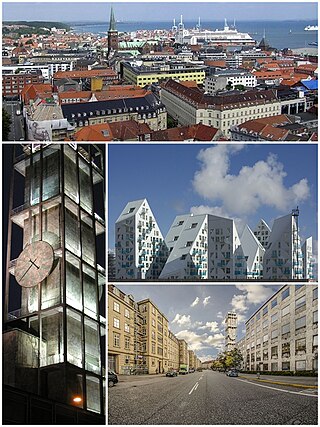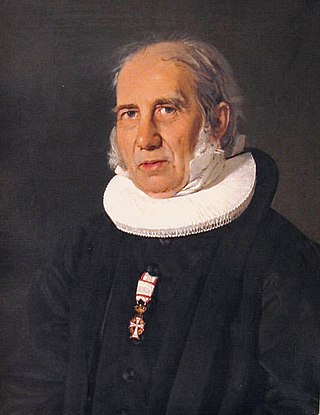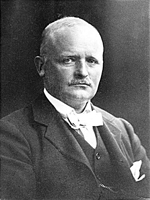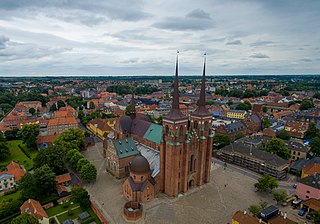Christian's Church may refer to:
- Christian's Church, Copenhagen, a Church of Denmark church in Copenhagen
- Christian's Church, Aarhus, a Church of Denmark church in Aarhus
Christian's Church may refer to:

Aarhus is the second-largest city in Denmark and the seat of Aarhus Municipality. It is located on the eastern shore of Jutland in the Kattegat sea and approximately 187 kilometres (116 mi) northwest of Copenhagen.

Tourism in Denmark is a growing industry and a major economic contributor: tourists spent a total of DKK 128 billion and the tourism industry employed 161,999 people in full time positions in 2017.

Ringsted is a city located centrally in the Danish island of Zealand. It is the seat of a municipality of the same name.
Higher education in Denmark is offered by a range of universities, university colleges, business academies and specialised institutions. The national higher education system is in accordance with the Bologna Process, with bachelor's degrees, master's degrees and doctoral degrees. The majority of higher education institutions are the responsibility of the Ministry of Higher Education and Science; however, some higher education institutions within the arts are the responsibility of the Ministry of Culture.

Nikolaj Frederik Severin Grundtvig, most often referred to as N. F. S. Grundtvig, was a Danish pastor, author, poet, philosopher, historian, teacher and politician. He was one of the most influential people in Danish history, as his philosophy gave rise to a new form of nationalism in the last half of the 19th century. It was steeped in the national literature and supported by deep spirituality.

Aarhus University is a public research university with its main campus located in Aarhus, Denmark. It is the second largest and second oldest university in Denmark. The university is part of the Coimbra Group, the Guild, and Utrecht Network of European universities and is a member of the European University Association.

Hack Kampmann was a Danish architect, Royal Inspector of Listed State Buildings in Jutland and professor at the architecture department of the Royal Danish Academy of Fine Arts. Marselisborg Palace in Aarhus, built between 1899 and 1902, is among his best known works.

Christianity is the largest religion in Denmark. As of 2024, 71.2% of the population of Denmark were registered members of the Church of Denmark, the officially established church, which is Protestant in classification and Lutheran in orientation.

The Catholic Church in Denmark is part of the worldwide Catholic Church, under the spiritual leadership of the Pope in Rome. The Diocese of Copenhagen covers the whole of the country, as well as the Faroe Islands and Greenland, and as such is one of the geographically largest Catholic dioceses by area in the world.

Christian Frederik Møller, generally referred to as C. F. Møller, was a Danish architect, professor and, from 1965 to 1969, the first rector of the Aarhus School of Architecture. His former practice, Arkitektfirmaet C. F. Møller, which he founded in 1924, still exists and bears his name. It is today the largest architectural firm in Denmark with branch offices in several countries.

The architecture of Denmark has its origins in the Viking Age, revealed by archaeological finds. It was established in the Middle Ages when first Romanesque, then Gothic churches and cathedrals, were built throughout the country. During this period, brick became the construction material of choice for churches, fortifications and castles, as the country had little access to stone.

Thorvald Jørgensen was a Danish architect, most known for his design of Christiansborg Palace, the seat of the Danish Parliament, after it had been destroyed in a fire. He has also designed a number of churches in Copenhagen. He was Royal Building Inspector from 1911 to 1938.
Events from the year 1875 in Denmark.
Events from the year 1877 in Denmark.
Events from the year 1880 in Denmark.
Events from the year 1897 in Denmark.

Emdrup is a neighbourhood straddling the border between the Bispebjerg and Østerbro district of Copenhagen, Denmark. It is located between Utterslev Mose in the west and the Helsingør Motorway in the east, just south of the border with Gladsaxe and Gentofte municipalities. Emdrup is a mainly residential neighbourhood, boasting a combination of apartment buildings and areas with single-family detached home. Emdrup station is located on the Farum radial of the S-train system. AU Campus Emdrup, Aarhus University's Copenhagen campus, is situated just north of the station. The most important greenspaces are Lake Emdrup with its small lakeside park in the east, Utterslev Mose in the west and Emdrupparken with sport facilities in the north.

Carl Christian Eduard Lange was a Danish architect known primarily for his works on manors and churches in Jutland and several prominent buildings in Aarhus.

The Aarhus Runestones or Ålum Runestones are six Viking Age runestones which were discovered in and around the city of Aarhus, Denmark. The stones are officially titled Aarhus 1 through 6 and they are all memorial stones created in memory or honor of a person. All six stones are kept and displayed at Moesgård Museum and one of the stones is known as the Aarhus Stone or Mask Stone and features the carving of a mask which has become the official symbol of Moesgård Museum.

The Crown of Christian IV, created for the coronation of Christian IV of Denmark-Norway, on 29 August 1596, is the older of the two surviving crowns of Denmark. Only used for one more coronation, that of his son, Frederick III, in 1648, it is together with the other Danish crown jewels now on display in the Royal Danish Treasury at Rosenborg Castle.